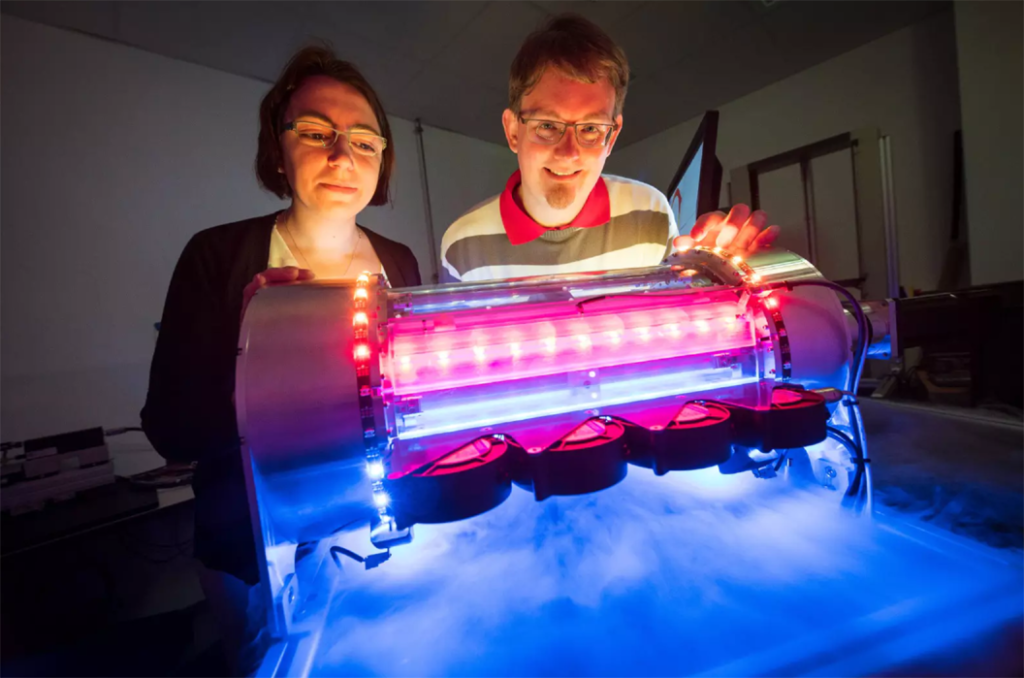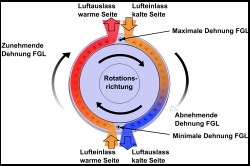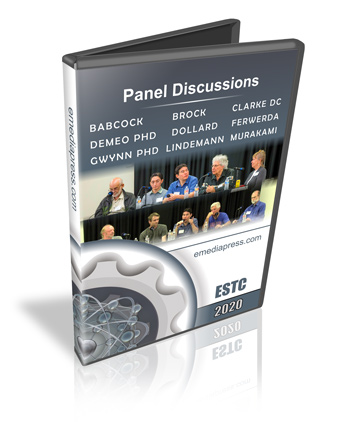 A university project created a cooling system that creates about 600% more work than it takes to run the system using memory metal.
A university project created a cooling system that creates about 600% more work than it takes to run the system using memory metal.
In this brief article, you’ll learn how something can easily produce way more work than it takes to run it and there are no violations of physics.
Electric heating element heaters are energy hogs for the heat they produce but regardless, they are 100% efficient already. And there is nothing magical or special about a 100% efficient heating system.
Why? Because nichrome or other heating element wire is thought to dissipate or waste all the electrical current that runs through it. That is not even close to being the reality, but that is what conventional science believes so we’ll just entertain that for the purposes of this article and to keep it simple. Normally, heat is considered waste in non-heat systems but if you power a heating element and it “wastes” all the electricity, then it is 100% efficient since the desired work is the heat.
Efficiency is a funny subject because as absolute as it sounds, it is really an objective measurement because efficiency changes depending on your perspective of what kind of work you want.
An incandescent bulb is considered 10% efficient since the desired work is light while 90% of the energy is “wasted” in heat. However, if we want to use those bulbs as heaters, then magically, they would be considered 90% efficient, with 10% wasted as light. But if you want some heat AND light, then the bulb is also magically considered 100% efficient since 100% of what you are using to power the bulb is creating both power and light.
Heat pumps create hundreds of percent more heat/cooling than the electricity required to run them – geothermal, refrigerators, air conditioners, air source heat pump dryers and water heaters, etc. yet, they are less efficient than heating element heaters.
Efficiency is a ratio of TOTAL input to TOTAL output. The heating element produces as much heat as the wattage is provided. It is 100% efficient.
But there is another measurement, COP or Coefficient of Performance, which is the ratio of ONLY WHAT WE PROVIDE on the input compared to the TOTAL output. With a heating element, we provide all the input so total output divided by our input will equal 1.0 or COP of 1.0.
With heat pumps, the story is very different. If it takes 200 watts of electricity to run a compressor to circulate a refrigerant through compressions and expansions cycles (that creates high and low potentials in the system), heat moves for free towards a colder area so the total amount of heat moved in a heat pump can easily be 300, 400, 500, or 600 watts worth of work in an electrical equivalent – for only paying 200 at the wall.
If you put in 200 but you get 600 watts of heat movement, the total desired work is 600 watts worth divided by only your input (not counting free environmental contribution) of 200 watts = 3.0 or COP of 3.0. That is a 300% NET GAIN in total energy (work) produced compared to what you have to pay for. But if you look at all input including environmental input, it will be under 100% since there are losses. That is how you can have a system that produced hundreds of percent more work compared to what you pay for although it will still be 100% efficient of less.
The cooling system methodology created by a team led by Professors Stefan Seelecke and Andreas Schütze at Saarland University is technically not new in concept, but it is the best example of taking advantage of an interesting memory metal called Nitinol and it’s known effects of soaking up heat while it gets bent and releasing the heat when it straightens out.
The cooling system is made of a cylindrical chamber with a rotor that has nitinol metal strings running along the length. There is a cam system that flexes the wire as it rotates for 1/2 the revolution. During this 1/2, the wires soak up heat in that compartment, which cools the compartment down. When the wires goes into the other side of the chamber, they are allowed to straighten up and they release a lot of heat, which heats up that compartment.
There is air moving through the devices to move both the hot and cold air. The claims from the university is that it is about twice as efficient as a heat pump. As you know from the examples above that a heat pump could have a COP of 2.0 or 3.0 easily. That means that this new Nitinol cooling device would have a COP of 4.0-6.0 or 400-600% more work done than the motor takes to rotate the cylinder!
Although the recent buzz has been talking about this latest development as if it is new, but the university has been at this project for several years. Read this to see where their thought process came from as well as their funding. https://www.asminternational.org/web/smst/newswire/-/journal_content/56/10180/26145309/
It also has this graphic that illustrates a bit of how it works – this is not shown in any of the recent media releases.

Here is a PDF of the German patent: http://emediapress.com/wp-content/uploads/2019/04/DE102016118776A12.pdf
Here is the PDF with a low quality translation to English – good enough to understand what is going on: http://emediapress.com/wp-content/uploads/2019/04/DE102016118776A11.de_.en_.pdf
Who will be the first to replicate the claims and post their results in http://energeticforum.com?
For more info on Nitinol, go here: Nitinol
To learn how open systems are permissible by the laws of physics and that systems CAN and DO produce more work than it requires from the operator by getting these two presentations:
Hacking the Aether by Aaron Murakami: https://emediapress.com/shop/hacking-the-aether/
Open System Thermodynamics by Peter Lindemann: https://emediapress.com/shop/open-system-thermodynamics/
Share this article with your friends using the links below – let’s get some replications going!



